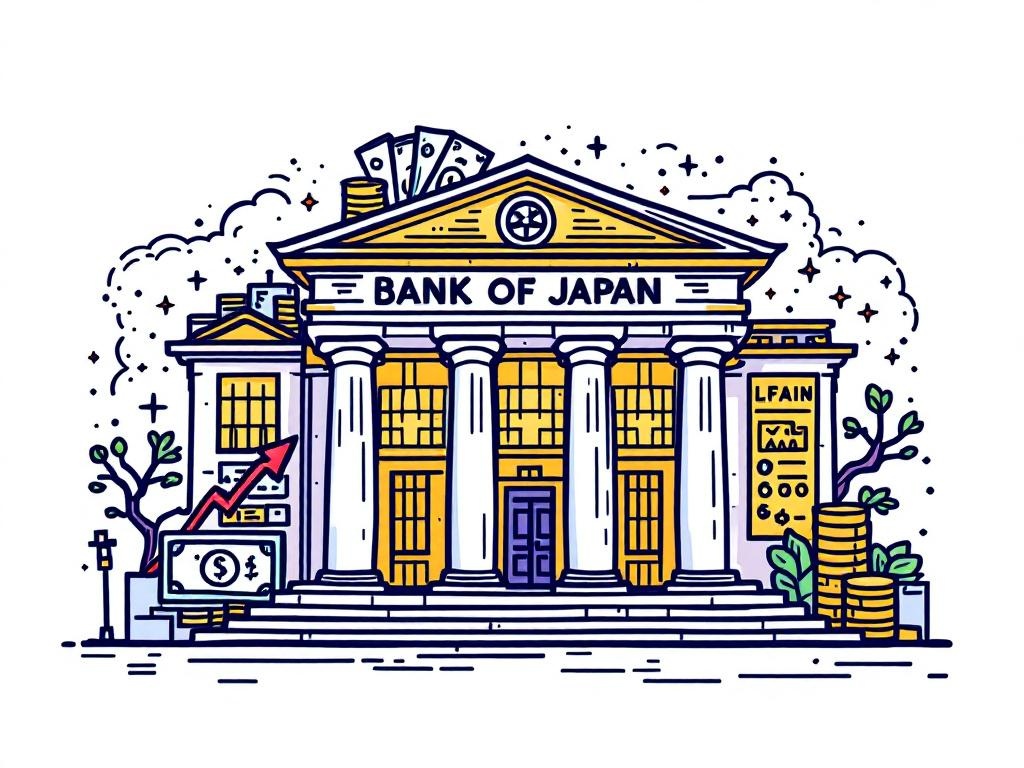Bank of Japan Faces Inflation and Slow Growth Challenges

Tokyo, Tuesday, 8 July 2025.
The BOJ is confronted with rising wages and inflation that surpasses 2%, hindering real income growth and complicating monetary policy as U.S. tariffs loom.
Rising Wages and Inflationary Pressure
In May 2025, Japan experienced a steep decline in real wages, falling by 2.9% year-on-year—the most significant drop in nearly two years, according to government data [1][2]. This decrease marks the fifth consecutive month of shrinking real wages, complicating the Bank of Japan’s (BOJ) efforts to manage its monetary policy [1]. While Japan’s unions negotiated a 5.25% wage increase starting in April 2025, inflation has consistently surpassed the BOJ’s 2% target, undermining the intended benefits of the wage hikes [1].
Impact of U.S. Tariffs and Economic Outlook
Japan is on the verge of facing a new wave of economic challenges as the U.S. threatens to impose 25% tariffs on Japanese imports beginning 1 August 2025 [1][6]. These potential tariffs come as Japan’s economy already contracted by 0.2% in the first quarter of 2025 due to declining exports, further stressing the BOJ’s position as it attempts to steer Japan away from potential recession [1]. These developments compound existing concerns regarding corporate profits and have a significant bearing on future wage growth, which may restrict the BOJ’s freedom to adjust interest rates as planned [2][6].
Monetary Policy Conundrums
BOJ Governor Kazuo Ueda is reportedly considering hiking interest rates, a move that could aid in bolstering purchasing power via a stronger yen despite the inflationary pressures [1]. However, economic analysts suggest that the current slowdown in wage growth and the oncoming tariff threats might compel the BOJ to delay its plans for rate adjustments [1][2]. The looming U.S. tariffs add an extra layer of uncertainty, potentially complicating the decision-making process and further disrupting BOJ’s monetary policy normalization strategy [5][2].
Future Economic Indicators to Watch
With the next interest rate decision session on 9 July 2025, the economic indicators being closely monitored include rising nominal wages in Japan, albeit at a weakened pace of 1% in May 2025, and potential geopolitical tensions that could influence investor sentiment toward safe-haven currencies like the JPY [3][7]. Traders are also anticipating the Federal Open Market Committee meeting minutes to be released on 9 July 2025 for insights into the U.S. Federal Reserve’s financial policy adjustments, further influencing JPY and USD dynamics [3][2].
Sources
- www.cnbc.com
- www.reuters.com
- www.fxempire.com
- www.ft.com
- www.mufgresearch.com
- tradingeconomics.com
- www.mitrade.com